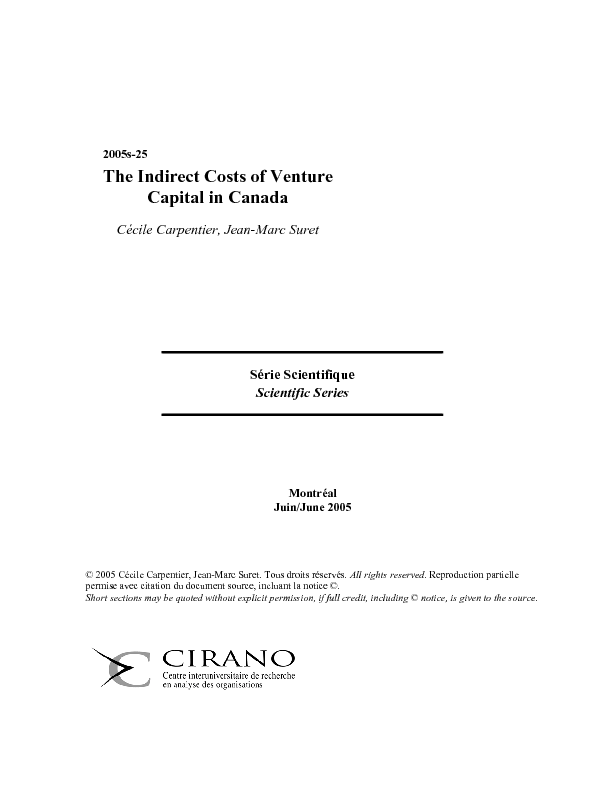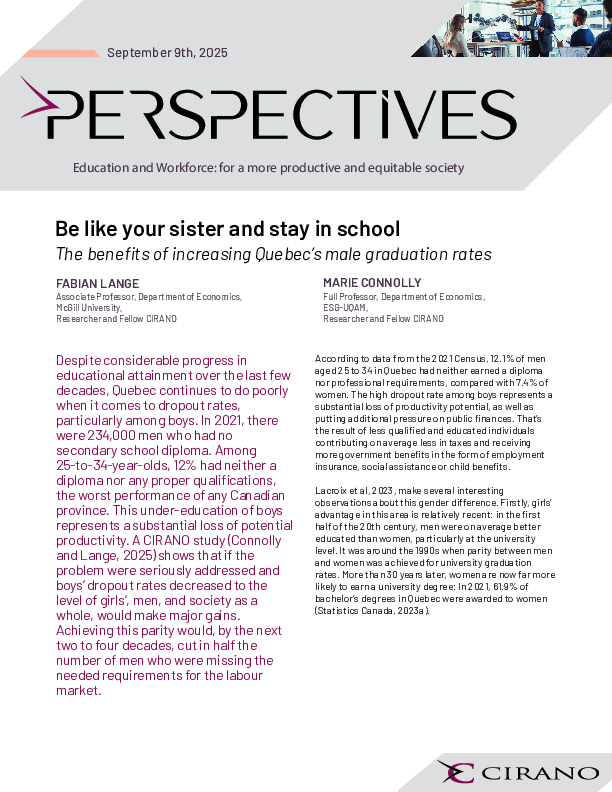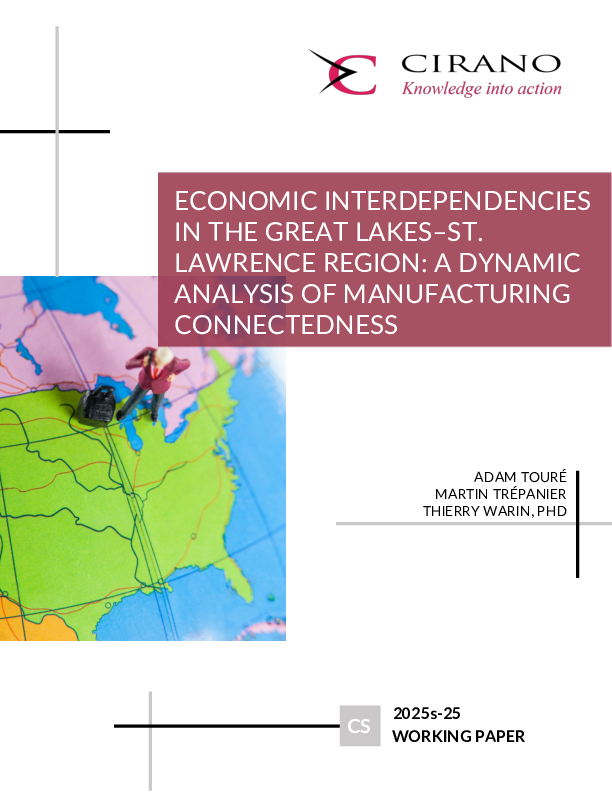The Indirect Costs of Venture Capital in Canada
Some analysts and policy makers consider that the growth of New Technology Based Firms (NTBF) is impeded by an insufficient supply of capital. In Canada, as in other jurisdictions, the public authorities have interceded to fill this equity gap by increasing the supply of funds. However, several researchers contend that this gap is mainly associated with information asymmetry that particularly affects technological firms. Agency and moral hazard problems explain why it can be time consuming and costly to get outside equity. We propose the first analysis of these indirect costs of financing. These costs are partially intangible and can be determined only through a field survey and case analyses. In this study, we identify the elements that generate indirect costs of financing and estimate the costs and time frames associated with 18 financing rounds undertaken by 12 NTBF in Quebec, where the supply of venture capital is very abundant. We show that these costs are indeed substantial and heavily penalize small companies, especially during the initial financing round and prior to the commercialization phase. Thus, the classic government intervention policies intended to increase the supply of funds may be largely ineffectual. More specific training and support actions would likely be more effective.
[ - ]




